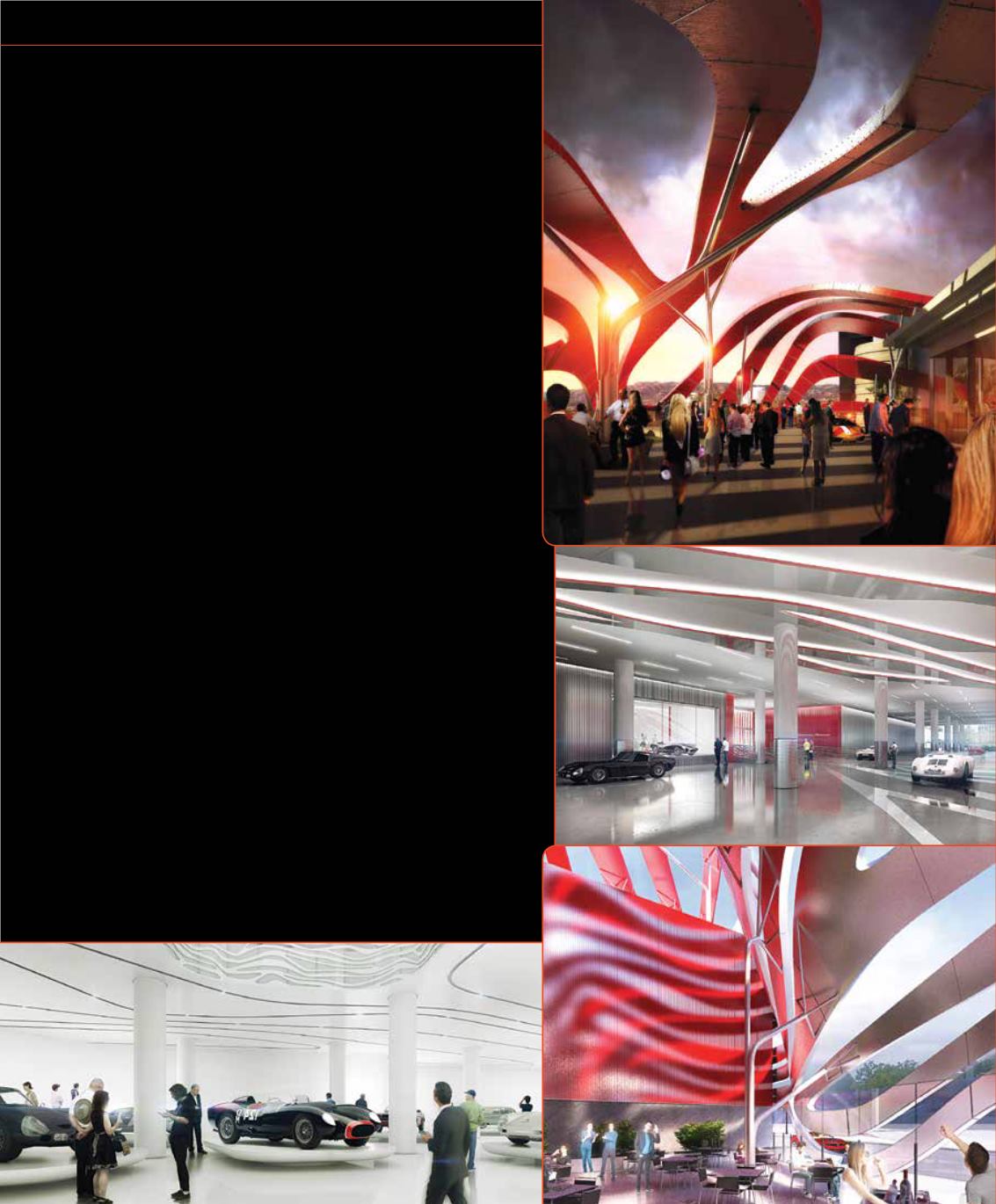
94
winter
|
spring
A hundred miles south of Coast Village Road, the grand transformation
of the Petersen Automotive Museum takes the Southern Californian
appreciation of these toys to a new, international scale. After being closed for
renovation, the Petersen reopened to the public on December 7.
The Petersen, at Fairfax and Wilshire on Los Angeles’ Miracle Mile, was
originally a Japanese department store. Constructed in 1962, the retailer went
out of business in 1986 and the store, a four-story, windowless rectangle, sat
empty for six years. In 1992, the building was bought by Robert S. Petersen to
house his impressive collection of automobiles. The collection grew while its
home remained the same for 22 years.
The board of directors, including Hammer, decided to update the
building to represent the extraordinary collection of cars that it housed. To
honor the piece of history inside, the building needed to be extraordinary
as well. After a rigorous architect selection process, Kohn Pedersen Fox
Associates was chosen as design architect to renovate the remaining structure
while evoking what the museum’s collection inspires: motion, dynamism, and
thrill. The museum closed and the renovation began in the fall of 2014.
Design principals Gene Kohn, a Montecito homeowner, and Trent
Tesch were tasked with a complete transformation of the existing structure.
Demolition and ground-up construction would be too timely and expensive.
The building required an exterior renovation, without changing the massing
of the defunct department store. Embracing the history of the building as a
design opportunity, the team aimed to renovate the structure to announce
itself on Wilshire and Fairfax, and join its distinguished neighbors, including
LACMA and the recently completed Broad.
Board member David Sydorick had three wishes for the design: that it
would evoke movement and flow, a far cry from the existing stucco façade;
incorporate the color red, quintessential to the race car; and that the building
break from its right-angled box. In addition, the windowless design would
STRUCTURES


